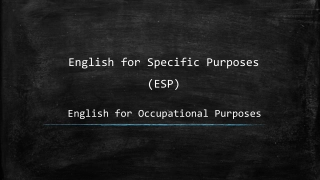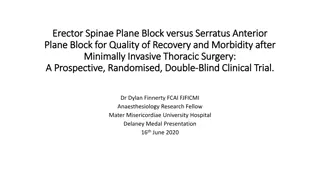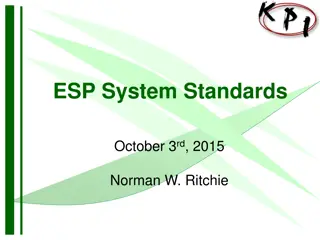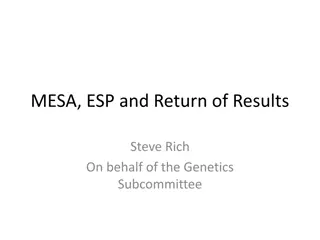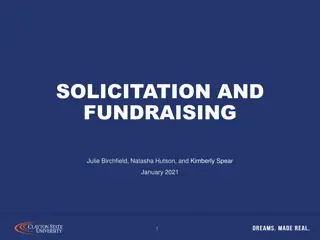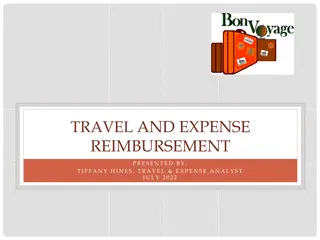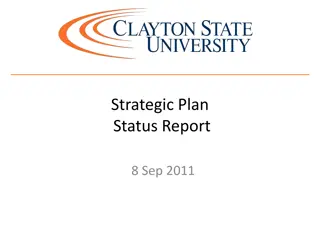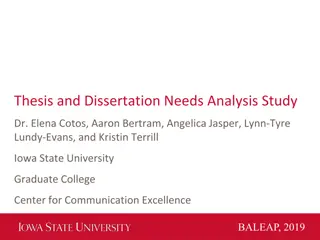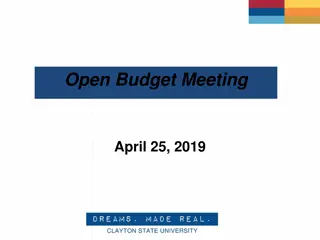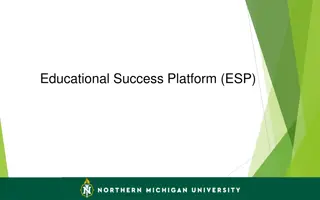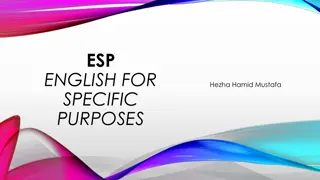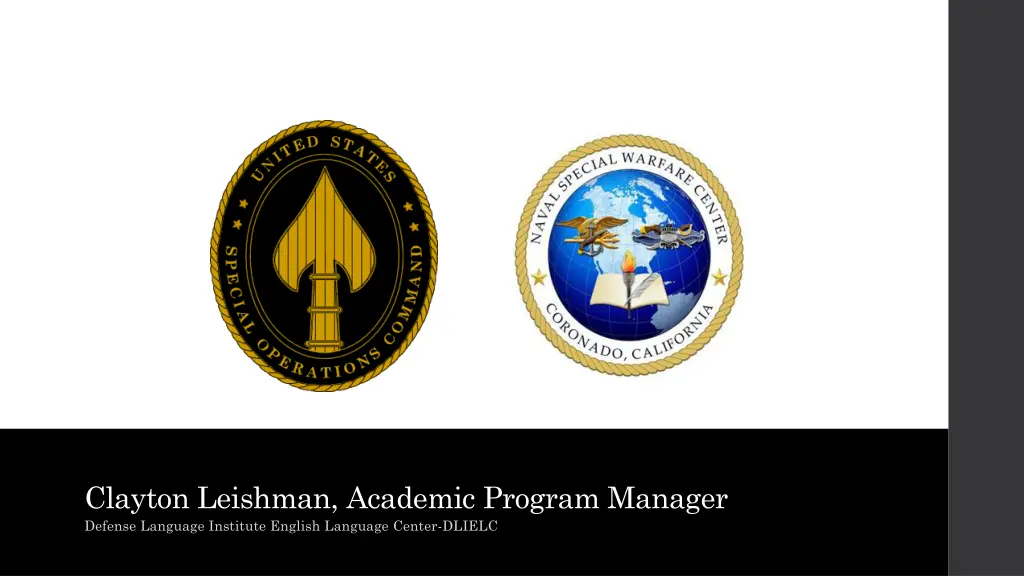
Connecting Curriculum and Assessment in Language for Special Purposes Setting
"Explore the integration of curriculum and assessment in a specialized language setting, addressing needs analysis, curriculum design, assessment alignment, and operational gaps. Enhance language training by closing performance gaps and aligning capabilities with curriculum and assessment."
Download Presentation

Please find below an Image/Link to download the presentation.
The content on the website is provided AS IS for your information and personal use only. It may not be sold, licensed, or shared on other websites without obtaining consent from the author. If you encounter any issues during the download, it is possible that the publisher has removed the file from their server.
You are allowed to download the files provided on this website for personal or commercial use, subject to the condition that they are used lawfully. All files are the property of their respective owners.
The content on the website is provided AS IS for your information and personal use only. It may not be sold, licensed, or shared on other websites without obtaining consent from the author.
E N D
Presentation Transcript
Clayton Leishman, Academic Program Manager Defense Language Institute English Language Center-DLIELC
Needs Analysis: Connecting Curriculum and Assessment in a Language for Special Purposes Setting
Agenda Curriculum and Assessment Background Curriculum Design Assessment Design Validation
Background Needs/Gap Analysis Identify whether there is a learning or performance gap by comparing current and desired states Specify the nature of the gap to understand how to best close the gap or align the current and desired states Evaluate potential solutions (e.g., recruiting, selection, training) Conduct a training needs assessment to support training development
Background Specified Training Need Increase alignment of curriculum to capability requirements Curriculum should focus on developing required capabilities Minimize negative impacts of teaching to the test by aligning curriculum with the required capabilities
Background Specified Assessment Need Increase alignment of assessment to capability requirements Test should measure examinees ability to conduct individual tasks related to enduring capabilities Minimize negative impacts of teaching to the test by purposely aligning assessment with the curriculum and required capabilities (i.e., create positive washback)
Background Operational Gap A gap exists between how an Operator needs to use language and how an Operator is trained. A gap exists between how an Operator needs to use language and how an Operator s language ability is assessed. Need a curriculum and aligned assessment which answer the question: Are Members ready to use the target language to accomplish their unique missions effectively?
Analysis Evaluate Implement Design Develop
Curriculum Design ADDIE Model Five Phases Analysis Design Develop Implement Evaluate Analysis Evaluate Implement Design Variations P-ADDIE-M ADDIE-M Rapid Prototyping Develop
Needs Analysis Policies Vision Evaluation Materials Outcomes Methods Assessment
Curriculum Design Brown Model Eight Phases Needs Analysis Vision/Design Outcomes/Objectives Assessment Methods Materials Policies Evaluation Needs Analysis Policies Vision Evaluation Materials Outcomes Rapid Prototyping Stakeholder Buy-in Methods Assessment
Curriculum Design Needs Analysis Three-Step Process: Analysis Results: Step 1-Identify Resources 4 Publications 834 Tasks Mission Task Analysis Step 2-Analize Tasks 613 Tasks KSA Analysis 211 Grouped Tasks 20 Mission Content Domains 20 Linguistic Functions Step 3-Identify KSAs 1SEAL Occupational Standards, SWCC Occupational Standards, NWP 3-05, Universal Naval Task List
Curriculum Design Needs Analysis Goal is to align capability with mission requirements at end of training Mission/Task Analysis Strategic Job Analysis Knowledge, Skills, and Abilities (KSA) Analysis Training requirements will guide course standards, curriculum, materials and assessment requirement(s)
Curriculum Design Task Analysis Relevance of task to mission Whether language is necessary to execute or train others Frequency of task on typical mission Importance of language to the task
Curriculum Design KSA Analysis Linguistic Function Content Domain(s) Activity or Task Linguistic Functions General Content Mission Content Tasks Give Instructions Give Description Time Weather Colors First Aid Craft Mobility Insertion Conduct Free-Fall Maintain Equipment
Curriculum Design Assessment Requirements Formative Requirements: Link for students between operational need, learning objectives, classroom learning, assessment, real-life Summative Requirements: Ability to measure degree to which Members are capable of using the target language flexibly/adaptively to accomplish their unique missions effectively Administrative Requirements: Cost, administration, training, certification
Curriculum Design Assessment Requirements Administrative Factors Formative Factors Summative Factors Construct Validity Face Validity Cost Reliability Positive Washback Alignment Ease Of Administration Generalizability Positive Washback Context Ease Of Training Or Use Accuracy/Usability
Curriculum Design Assessment Plan Task Performance Level Expectations Constructive Feedback/Error Correction Reflection/Self-Assessment-Daily Consolidation Block Formative Quizzes-Weekly Summative Unit Test-Monthly Defense Language Proficiency Test (DLPT) and Oral Proficiency Interview (OPI)-Final Week Capstone Summative Assessment-Final Week
Assessment Design Definitions Proficiency is the ability to use a language to communicate meaningful information in a spontaneous interaction, and in a manner acceptable and appropriate to native speakers of the language. (As defined by ACTFL Training Manual)
Assessment Design OPI+ Concept Customized oral proficiency assessment that maintains the global aspects of a standard OPI while incorporating domain-specific content Augments DLIFLC OPI protocol to assesses how well students are able to function using the target language in both general- and mission-specific content domains Assigns a proficiency rating according to the Interagency Language Roundtable (ILR) level descriptors for listening and speaking following standard ACTFL/DLIFLC OPI rating protocols
Assessment Design OPI+ Features Core components shared with OPI: Criterion-Referenced (ILR Skill Descriptors) Trained and Certified Testers (ACTFL/LTI) Two-Skill OPI (Listening and Speaking) Familiar Structure (Warm Up, Level Checks, Probes, Wind Down) Additional components of the OPI+ Modular Testlet Design (3 tasks) Stimuli Prompts (picture, map, report) Score and Feedback Report
Alignment OPI and OPI+ Comparison Linguistic Functions General Content OPI Linguistic Functions General Content Mission Content OPI+
Alignment Curriculum and Assessment Linguistic Functions General Content Mission Content
Alignment Core Competency Analysis Navy USMC Army Air Force
Alignment Sample SOF Tasks

